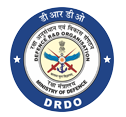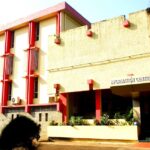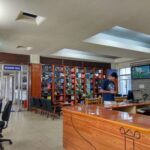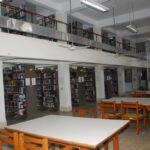Home /Library/ Information Centre and Library
OPEN TENDER NOTICE FOR ONLINE JOURNALS AND PRINT JOURNALS
History:
Since the establishment of the Institute of Armament Technology (IAT) in 1952, the Library has come into existence. Initially, started in the College of Military Engineering (CME), Dapodi, Pune, as the Library of Institute of Armament Studies. The Library occupies a place of pride in DIAT DU and plays a vital role in its outstanding training, research, and education mission. It is a lively place on the campus, providing a comfortable and friendly environment that enables learning and advancement of knowledge, and promotes discovery and scholarship. Presently IC&L is well equipped with the latest information technology tools for information collection, storage, processing, and retrieval. The IC&L has a team of well-qualified personnel to cater to the institute’s technological and scientific needs supported by an active collection of about 90,000+ documents maintained in a professional way for quick retrieval.
Information Center and Library:
Information Center and Library is the knowledge hub of the Defence Institute of Advanced Technology (DU), Pune. It reflects the institute’s commitment to providing the best possible Library and information services to its academic community of faculty members, scientists, students, and staff members. It is a significant resource for Defence, Science and Technology and allied subjects information in this part of the world. It has a tremendous collection of both printed and digital resources. It offers a range of services, including reference and consultation, membership, circulation, document delivery, resource sharing, information alert, bibliographic, and digital library services to the library members. The IC&L has been continuing its mission of facilitating new knowledge through the procurement, retrieval, preservation, organization, and dissemination of different resources. The collection of books, journals, e-journals, databases, theses, reports, standards, and other reading resources is the Library’s best and largest asset. The Library subscribed 105 Indian print Journals, and 19,000 + online journals, databases such as Science Direct, IEL, ASME, ACM, ProQuest: TRC, ABI/Inform, SCOPUS, Springer Link, J-Gate and E-books, etc. Books’ total collection is 58,628, E-Books 7114, Back Volumes 21875, Reports 2,000, Dissertations, and Theses 1762. The compact storage system was installed in the new library building, and back volumes of before 1960s are preserved in the compact storage. For an integrated information access facility, the Library is using LibSys-10, the web-centric library management software.
The ICL implemented RFID technology through LibSys-10 for its collections and services. The use of RFID reduces the amount of time required to perform circulation operations. The most significant time saving with bootable is that information can be read from RFID tags much faster than from barcodes. RFID technology automates data collection and vastly reduces human effort and error. It will supports tag reading with no line-of-sight or item-by-item scans required.
The Library has been designed and developed DIAT (DU) digital repository. This is information systems that ingest, store, manage, preserve, and provide digital content access. This Institutional digital repository serves multiple purposes; the primary goal is to support scholarly communication and provide open access to articles, dissertations, research data, etc. The DIAT institutional repository consists of formally organized and managed digital content collections generated by faculty, staff, and students at an institution. This repository is essential for the university to manage and capture intellectual assets as a part of the university information strategy. We have been identified Dspace software; it is an open-source repository software package typically used for creating open access repositories for scholarly and published digital content of the DIAT fraternity. The DSpace repository software serves DIAT specific need as a digital archives system, focused on long-term storage, access, and digital content preservation.






